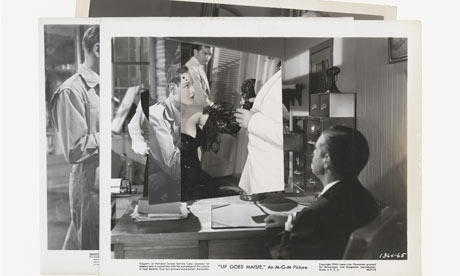 |
I remember when I asked my boss how to make a living when you open a gallery.
He told me that: "You have to keep selling, selling and selling."
This is one part of my first draft where I put into the footnote. The original story is Dr. Frankenstein want to sell the whole installation as a whole, and forcing artists to sign an unfair contract before get involved in the exhibition.
So here is my argument towards the selling of the installation. However, in my final draft, I decided to abandon this crazy, fun plot and choose to make the story develop in a less Tim burton way.
----------------------------------------------------------------------------------------------------------------------------------
Why can't we market the installation, and not just about artworks alone? Since our life has already driving towards a more aesthetic style, there are increased interest in the market since we seem to live under the condition of postmodernity, the process of democratisation has rendered aesthetic products/ experiences equal to many other activities that constitute the experience of everyday life. That is, life is becoming more like the arts: ephemeral, experiential, and image or style-based. Through the commercial and mediator between the products and the recipients, the market (recipient/ consumer) was being taken a step further by the artist, the art market, advertising imagery, and representation by linking aesthetic processes and contemporary consumption practices, including the examination of representation as a key process of experiencing the world, and of photography as a vehicle for individual and cultural identity construction.
However, in order to construct the process of cultural production, it is important to understand how it create and consume not only physical products but also the symbols and meanings within the products. In order to create symbol, and transfer f these meaning t cultural products. These symbols is context dependent which operates as codes, or language, thus to construct the meaning (2006; Venatesh& Meamber). According to Groys in ‘From Medium to Message: The Art Exhibition as Model of a New World Order’.
In the course of modernity, the curator was considered mostly to be somebody who keeps pushing himself between the artwork and the viewer - and disempowering the artist and the viewer at the same time. Hence the art market appears more favourable to modernist, autonomous art than the museum because the works of art circulate singularized, decontextualized, uncurated, the market also functions according the rules of potlatch ... the artwork once it enters art market then it is beyond the justification which the artist is his/her own works’ sovereign origin.
But Groys also pointed out in the further reading of the text that the installation does not circulate as the installation is a medium itself which install everything we circulate in our civil life (film, text, object...etc) but the symbols were being privatized by the public exhibition space which as Groys puts ‘the private, sovereign decisions are controlled in our societies to a certain degree by public opinion and political institutions.'
My argument here on the possibility of the curator as an artists is positive. Not only curators should market their own aesthetic globally, but also by creating the exhibition installation which format itself as a narrative context that as a medium which opens to the public/ consumer to interpret its codes and language. Not only the curator now is not merely an mediator, but also the artists, he is playing a very important role when it comes to the biennial exhibition, it is essential to recognize that the decision to create a cultural product is ultimately a decision based on the market - that is, whether or not consumers accept (need/ want) the product (2006; Venatesh& Meamber). With the biennial culture and nomadism of most of today’s curator working life, since the consumer attaches to experiences and products, it is noted that a cultural product that provides symbolic benefits consistent with cultural priorities is more likely to be accepted than that one that does not.
Here, I am arguing again that the artworks as to artists is a finished products once its completed in the artist’s mind. The curator who is no longer as a mediator since the installation has its double function as a medium also product to its own audience, a curator with his/her social engagement and aesthetic juxtaposition should posit him/herself as a writer speaks the narratives by curate, facilitate and make the use of artworks so to produces symbols and meaning that the audience can actively participate.
Here, I am arguing again that the artworks as to artists is a finished products once its completed in the artist’s mind. The curator who is no longer as a mediator since the installation has its double function as a medium also product to its own audience, a curator with his/her social engagement and aesthetic juxtaposition should posit him/herself as a writer speaks the narratives by curate, facilitate and make the use of artworks so to produces symbols and meaning that the audience can actively participate.


.jpg)






